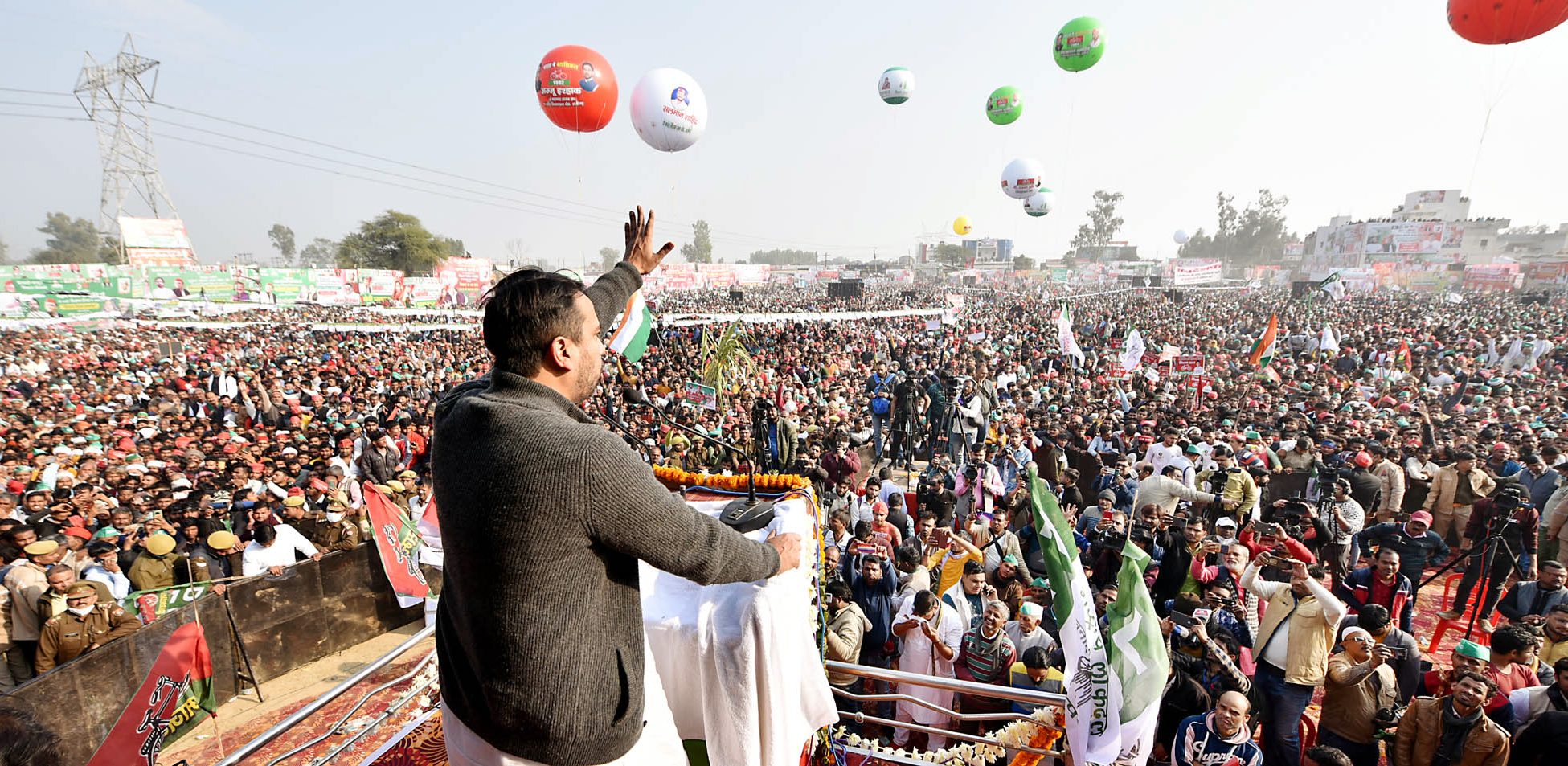Historical data suggests a difficult road ahead for RLD.
New Delhi: While the perceived farmer anger against the ruling Bharatiya Janata Party (BJP) is being attributed as a reason that will put the Rashtriya Lok Dal (RLD) in a kingmaker’s position in Uttar Pradesh election, the past electoral record of the RLD suggest that even at its prime, it has struggled to get more than 4% of the vote share in almost two and a half decades of its existence during which it has contested four assembly elections under the banner of RLD and its first election, that of 1996, under the name of “Bhartiya Kisan Kamgar Party”.
Since 2002, in the four assembly elections that have been held in the state, the RLD has contested on 615 assembly seats (38 in 2002, 254 in 2007, 46 in 2012 and 277 in 2017) either in an alliance with other parties or on its own, and has won on 34 seats, which puts its winning percentage at 5.5%.
Similarly, despite its impression of being the custodian of Jat votes due of Uttar Pradesh to the legacy of Jat leader Charan Singh and then Ajit Singh, the RLD has never crossed the 20 lakh votes mark in a state where the total registered voters in 2017, as per the Election commission of India data, were 14.16 crore, of which 8.67 crore had voted.
In that election, the RLD got 15.45 lakh votes, or 1.78% of the total votes that were polled. The votes that it got in 2017 were the lowest in its existence. In 2012, it got 2.33% votes, in 2007 it was 3.70% (the highest vote share it has ever got) and in 2002 it was 2.48%.
In the 1996 election, when RLD was Bharatiya Kisan Kamgar Party, it had got 10.65 lakh votes which was 1.9% of the total vote share. This is the first assembly election that the RLD is fighting under its new president Jayant Chaudhary, who was anointed the party president in May 2021, weeks after his father Ajit Chaudhary passed away due to covid 19. The party, which is fighting this election in an alliance with the Samajwadi Party (SP) is likely to contest on around 40 seats this time, of which it has so far announced candidates for 28 seats. It will not be wrong to say that Ajit Chaudhary was to Uttar Pradesh politics what Ram Vilas Paswan of Lok Jan Shakti Party (LJP) was to Bihar. Both managed to secure a pie in power sharing arrangement at the state and at the centre irrespective of which national party was in power despite getting minimal electoral support from the caste or community which they claimed to represent.
Till the 2020 elections, the LJP was seen by many political observers as the “voice” of Dalit voters of Bihar, despite successive numbers proving no such assertions. The LJP in the 2020 Bihar assembly elections, contested on 135 seats, while winning one. Its vote share in the election, much of which was attributed to the death of party patriarch Ram Vilas Paswan, who died just days before the election, was 5.50%. In the February 2005 elections, it had got 12.62% of the total votes polled, which came down to 11.10% in October 2005. The vote share of LJP further decreased to 6.75% in the 2010 polls. In the 2015 elections, where the party contested on 42 seats it got 4.8% of the total votes polled. Like Paswan, Chaudhary, too, was not bound by any ideological moorings and worked in an alliance with political parties of contrasting ideologies, Congress, BSP, SP and the BJP all throughout his political career.
The Illinois Institute of Technology, Chicago and IIT, Kharagpur educated Ajit Singh, made at least nine political switches in his career. He worked with the V.P. Singh government, left him to join the Congress government of P.V. Narasimha Rao, left Congress to form his own party, then worked with the NDA government of Atal Bihari Vajpayee and finally with the UPA government led by Prime Minister Manmohan Singh.
While aligning with the Samajwadi Party (SP) in this election, Jayant, who is did MSc in Accounting and Finance from the London School of Economics and Political Science, is following on the footstep of his father, who too had joined hands with the then SP chief Mulayam Singh Yadav in 1996. The RLD even formed a government with Mayawati’s BSP in 2002 only to go back to Mulayam Singh Yadav when he took the CM oath in August 2003 only to pull out months before the 2007 polls. According to political observers, despite the narrative in the media about Jat voters—which have a prominent presence in atleast 10 Lok Sabha seats and around 40 Assembly seats of Western Uttar Pradesh and comprise around 12% of the total population—rallying around RLD, it is unlikely to drastically improve on its 2017 performance because of its inherent limitations of never being accepted as a representatives of the Jat and the fact that the BJP, the party in power, has systematically made a presence among them by nurturing leaders from the community for the last 10-13 years.
Rajinder Kumar, a former special director of the Intelligence Bureau (IB) and someone who has substantial experience of following electoral twists and turns, believe that the Jats are going to vote for the BJP except in some isolated seats as even the Jats are not happy with the prospect of “Yadavs” coming to power which will happen in case Akhilesh Yadav takes oath as the CM in Lucknow in March when the results are announced.
“The RLD is likely to improve its tally from one seat it got in 2017, to three seats this time. A substantial section of Jats in Western UP have been supporting the BJP due to its Hindutva ideology,” Kumar told The Sunday Guardian.

